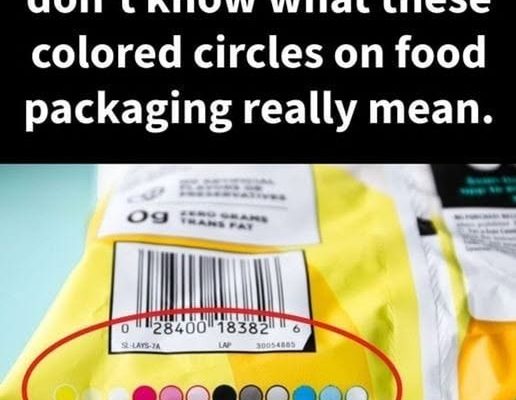When examining food packaging, you may have noticed small colored circles or squares, often located near the edges or bottom of the package. These seemingly cryptic symbols are known as “printer’s color blocks” or “process control patches.” While they might appear insignificant to consumers, they play a crucial role in the printing and packaging industry.
What Are Printer’s Color Blocks?
Printer’s color blocks are small, colored shapes—typically circles or squares—printed on packaging materials. They usually feature colors such as cyan, magenta, yellow, and black, corresponding to the CMYK color model used in color printing. In some cases, additional colors may be present to match specific brand requirements.
Purpose of Printer’s Color Blocks
These color blocks serve several essential functions in the printing process:
- Color Accuracy and Consistency:
- Technicians use these blocks to monitor and adjust ink levels, ensuring that the colors on the packaging match the brand’s specifications. This process maintains uniformity across all printed materials, regardless of where or when they are produced. Reader’s Digest
- Quality Control:
- The blocks help identify printing issues such as color deviations, misalignments, or ink density problems. By examining these patches, printers can make real-time adjustments to maintain print quality. AllRecipes
- Process Verification:
- They assist in verifying that all required colors are present and correctly applied, which is particularly important for complex designs involving multiple hues. Tasting Table
How Do They Work?
During the printing process, machines apply various inks to create the desired images and text on packaging materials. The printer’s color blocks are printed simultaneously in designated areas. Technicians or automated systems then examine these blocks to assess:
- Color Fidelity: Ensuring that each ink color is accurate and matches the intended shade.
- Registration: Confirming that colors align correctly without overlapping or gaps, which is vital for clear and sharp images.
- Ink Density: Checking that the appropriate amount of ink is applied for each color to prevent issues like smudging or fading.
By monitoring these factors, printers can detect and correct errors promptly, reducing waste and ensuring that the final product meets quality standards.
Why Are They Important?
While consumers may overlook these small marks, they are vital for several reasons:
- Brand Integrity: Consistent color reproduction ensures that a brand’s packaging is instantly recognizable and maintains consumer trust.
- Regulatory Compliance: Accurate printing of nutritional information, ingredients, and other mandatory details is essential for legal compliance and consumer safety.
- Production Efficiency: Early detection of printing issues through these color blocks helps prevent large-scale errors, saving time and resources.
Common Misconceptions
It’s a common misconception that these colored circles provide information about the product’s nutritional content or flavor. In reality, they are purely technical markers used during the printing process and do not convey any product-related information to consumers.
Conclusion
The colored circles on food packaging, though often unnoticed, play a crucial role in the printing industry. They ensure that packaging is produced with accurate colors and high quality, maintaining brand consistency and meeting regulatory standards. Next time you spot these printer’s color blocks, you’ll understand the technical precision and quality control they represent in bringing your favorite products to the shelf.




